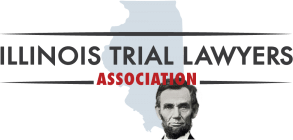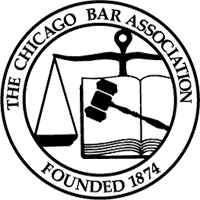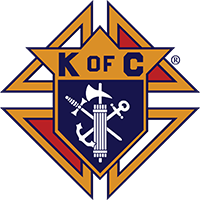Driving through the bustling streets of Chicago comes with its own set of risks, including the unfortunate event of car accidents. When such mishaps occur, understanding the nuances of Illinois’ at-fault laws is crucial for any driver, passenger, or pedestrian involved. This guide will walk you through everything you need to know about navigating car accident claims in Chicago.
Key Takeaways:
- Illinois follows an at-fault (tort) system – the responsible driver pays for damages
- You can’t recover damages if you’re more than 50% at fault
- Minimum insurance requirements: $25,000/$50,000/$20,000
- Document everything after an accident for your claim
- Consider legal help for complex cases or serious injuries
Understanding Illinois’ Accident Laws
What Does “At-Fault” Mean?
Simply put, the at-fault driver is the individual who is found legally responsible for causing the accident. Unlike no-fault states, where drivers turn to their own insurance first, Illinois requires the driver who caused the accident to be financially responsible for the damages.
When you’re involved in an accident in Illinois, the at-fault driver and their insurance company are responsible for compensating victims. The scope of this responsibility extends far beyond just fixing your car. It encompasses the full impact the accident has on your life. This compensation can cover:
- Medical bills and future medical costs
- Property damage to vehicles
- Lost wages and earning capacity
- Pain and suffering
- Other accident-related expenses
Understanding what damages you can claim is essential for ensuring you don’t settle for less than you deserve. Many accident victims are surprised to learn they’re entitled to compensation for non-economic damages like pain and suffering, which can significantly increase their claim’s value.
The Modified Comparative Negligence Rule
Chicago’s congested roads often lead to complex accident scenarios where multiple parties may share blame. Illinois car accident laws address this through modified comparative negligence, a legal principle that recognizes accidents aren’t always black and white. This system fairly allocates responsibility when multiple drivers contribute to a collision.
Under this rule, your percentage at fault affects your compensation. For example, if you’re 30% at fault, you can recover 70% of your damages. However, there’s a critical threshold. You cannot recover any damages if you’re more than 50% at fault.
After an Accident: The Claims Process
Determining fault involves assessing negligence, or the failure to exercise reasonable care under the circumstances. Insurance companies and legal professionals piece together what happened using multiple sources of information to create a complete picture of the accident.
How Fault Is Determined
The investigation examines both physical evidence and behavioral factors:
- Police reports and citations issued
- Eyewitness testimonies and traffic camera footage
- Photos of vehicle damage and the accident scene
- Violations of traffic laws
- Driver actions before impact
- Road and weather conditions
- Vehicle maintenance issues
- Accident reconstruction expert analysis, when needed
Each factor is weighted based on its contribution to the accident’s occurrence. For instance, running a red light typically establishes a clear fault, while disputes over who had the right of way in a parking lot may require more detailed investigation. In Chicago’s busy intersections and highways, traffic cameras and multiple witnesses can provide crucial objective evidence that supports your version of events.
The Insurance Investigation Process
Once you file a claim, insurance companies begin their investigation immediately. Their adjusters are trained to gather information quickly while memories are fresh and evidence is available. The process typically involves:
- Initial Contact: Insurance adjusters request statements from all parties
- Evidence Review: Companies examine medical reports, repair estimates, and accident documentation
- Fault Assessment: Adjusters determine liability percentages
- Settlement Offer: The at-fault driver’s insurer proposes compensation
This process can take anywhere from a few weeks to several months, depending on the accident’s complexity and injury severity. Understanding each stage helps you prepare appropriate documentation and avoid common pitfalls that could weaken your claim.
Illinois Insurance Requirements
Illinois law mandates minimum liability coverage that every driver must carry:
- $25,000 for injury or death of one person
- $50,000 for injury or death of multiple people
- $20,000 for property damage
Important Note: These minimums often fall short in serious accidents. A single emergency room visit can easily exceed $25,000, leaving accident victims with substantial uncovered expenses. This gap highlights why understanding your legal options becomes critical after a serious accident.
Essential Documentation for Protecting Your Rights
Strong documentation is your best defense against claim disputes. Focus on gathering:
Immediately After the Accident:
- Photos of all vehicles, injuries, and the scene
- Contact information from witnesses
- Copy of the police report
- Medical documentation (seek attention even for minor injuries)
Throughout Your Recovery:
- All medical records and bills
- Documentation of missed work and lost wages
- Receipts for accident-related expenses
- Journal of pain and daily limitations
Remember: Insurance companies often monitor social media accounts. Avoid discussing your accident online, as even innocent posts can be misinterpreted.
When You Need Legal Help
While minor fender-benders with clear fault can often be handled directly with insurance companies, certain situations require professional legal representation.
Contact an Attorney If:
- You suffered serious injuries requiring ongoing treatment
- You’re being blamed for more fault than you believe is accurate
- The at-fault driver was uninsured or underinsured
- You’re unable to work due to your injuries
- The insurance company denies your claim or offers insufficient compensation
- Multiple parties are involved, and fault is disputed
These situations involve complex legal issues and significant financial stakes that can overwhelm accident victims. Attempting to handle these cases alone often results in accepting settlements far below fair compensation.
Learn more about how a car accident attorney can help.
Schedule Your Free Consultation Today
If you’ve been injured in a Chicago car accident, don’t wait to get the help you deserve. Contact Shea Law Group today for a free, no-obligation consultation. We work on a contingency fee basis, which means you pay nothing until we win your case.
Call us today or fill out our online contact form to get started. Your recovery is our priority.








